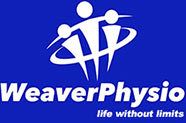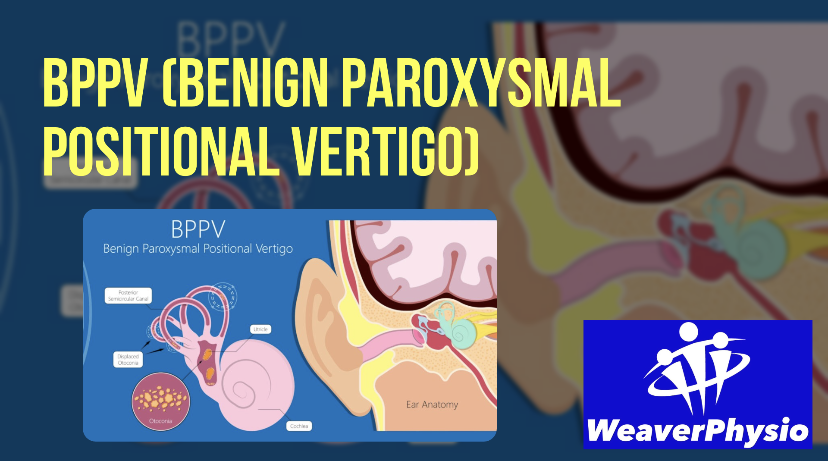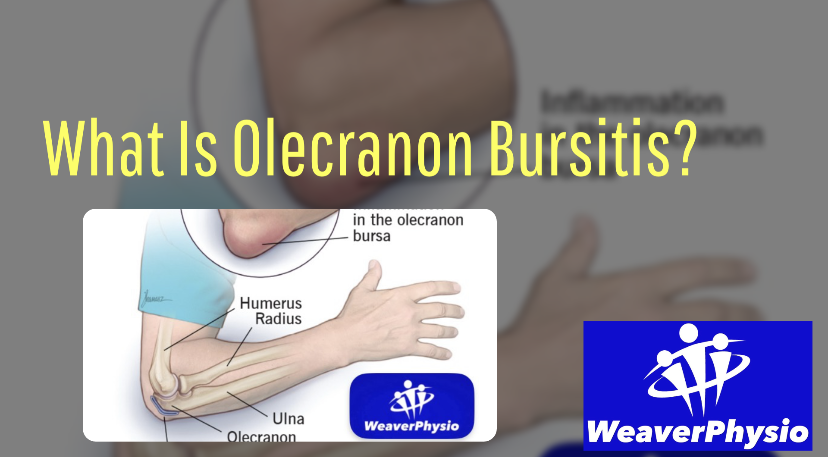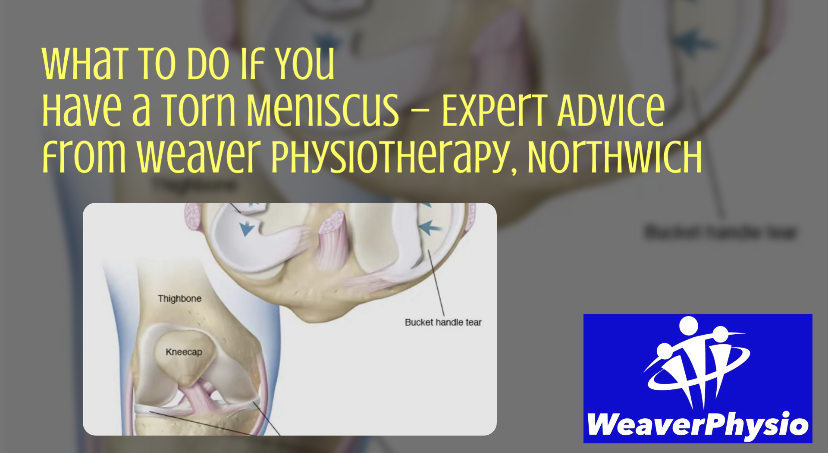Whiplash Injuries Explained
Causes, Symptoms, Treatment & Recovery at Weaver Physio, Cheshire

Whiplash is one of the most common neck injuries we see at Weaver Physiotherapy & Sports Injury Clinic in Northwich, Cheshire. Often caused by car accidents, sports collisions, or sudden impacts, whiplash can leave people with persistent pain, stiffness, and reduced movement.
Although many cases improve within weeks, others develop into chronic whiplash-associated disorders, affecting daily life, work, and sleep. The good news? With the right physiotherapy treatment, most people recover fully and avoid long-term complications.
In this blog, we’ll explain:
• What whiplash is and what causes it
• The signs and symptoms to look out for
• How physiotherapy helps recovery
• Self-care tips and exercises
• Why Weaver Physio is the trusted choice for whiplash treatment in Cheshire
What Is Whiplash?
Whiplash is a neck injury caused by a sudden, forceful back-and-forth movement of the head, similar to the cracking of a whip — hence the name. This rapid movement can strain muscles, ligaments, tendons, and joints in the cervical spine.
Common causes include:
• Car accidents (rear-end collisions) – the most frequent cause.
• Sports injuries – such as rugby tackles, falls in cycling, or contact sports.
• Slips, trips, and falls – unexpected jolts can overload the neck.
• Assault or sudden impact – such as being hit or shaken.
Symptoms of Whiplash
Whiplash symptoms usually appear within 24 hours, but sometimes take a day or two to fully develop.
The most common symptoms include:
• Neck pain and stiffness
• Reduced range of movement
• Headaches (often starting at the base of the skull)
• Shoulder or upper back pain
• Muscle spasms
• Tingling or numbness in the arms
Other possible symptoms:
• Dizziness
• Fatigue
• Blurred vision
• Difficulty concentrating
If you experience severe symptoms such as loss of balance, double vision, or difficulty controlling your arms/legs, you should seek urgent medical attention.
How Long Does Whiplash Last?
Recovery time varies depending on severity:
• Mild whiplash – usually improves within 2–4 weeks.
• Moderate cases – may take several months.
• Chronic whiplash-associated disorder – can last 6 months or more if untreated.
At Weaver Physio, we help clients across Northwich, Winsford, Knutsford, Middlewich, Tarporley, and Frodsham return to full function as quickly as possible with tailored treatment plans.
Why Physiotherapy Is Essential for Whiplash
Rest alone isn’t enough. Research shows that early physiotherapy intervention leads to quicker recovery and reduces the risk of long-term problems.
At Weaver Physiotherapy & Sports Injury Clinic, our Chartered Physiotherapists use a combination of treatments to:
• Reduce pain and stiffness
• Improve mobility and posture
• Strengthen supporting muscles
• Prevent chronic symptoms
Treatments We Use for Whiplash:
• Manual Therapy – gentle joint mobilisation and soft tissue techniques to ease stiffness.
• Exercise Rehabilitation – personalised strengthening and mobility programmes.
• Acupuncture & Dry Needling – for pain relief and muscle relaxation.
• Sports Massage – to release tension in surrounding muscles.
• Postural Re-education – correcting habits that contribute to ongoing discomfort.
General Physiotherapy Advice for Whiplash Recovery
1. Stay Active
It may feel uncomfortable at first, but gentle neck movement helps prevent stiffness. Prolonged rest can delay recovery.
2. Apply Ice or Heat
• Ice – reduces inflammation in the first 48 hours.
• Heat – helps relax tight muscles after the initial phase.
3. Manage Pain Sensibly
Pain relief may help in the short term, but physiotherapy addresses the cause, not just the symptoms.
4. Work on Posture
Avoid slouching or prolonged screen time. Keep your neck neutral and supported.
5. Gradual Return to Activity
If you play sport or have a physical job, our physiotherapists will guide you back safely with progressive rehabilitation.
Simple Exercises for Whiplash (to be done with guidance)
Disclaimer: Always consult a physiotherapist before starting new exercises.
1. Neck Rotation
Gently turn your head side to side, keeping movements pain-free.
2. Neck Flexion & Extension
Slowly look up and down to maintain mobility.
3. Shoulder Rolls
Relieve tension and improve posture.
4. Chin Tucks
Helps strengthen neck stabilisers and reduce forward head posture.
At Weaver Physio, we design individualised exercise programmes tailored to your condition and recovery stage.
Common Myths About Whiplash
Myth 1: Whiplash only happens in car accidents.
Fact: While common in collisions, it also occurs in sports, falls, and other impacts.
Myth 2: Rest is the best treatment.
Fact: Gentle movement and physiotherapy promote faster recovery.
Myth 3: Whiplash is minor and always heals on its own.
Fact: Without treatment, some people develop long-term pain and stiffness.
Myth 4: A neck collar speeds recovery.
Fact: Modern guidelines recommend avoiding prolonged immobilisation. Active rehab is better.
Weaver Physio – Cheshire’s Trusted Whiplash Specialists
With over 70 years of combined clinical experience, Weaver Physiotherapy & Sports Injury Clinic has helped hundreds of patients recover from whiplash and other neck injuries.
Why choose us?
• ✅ Immediate access – no long NHS waits
• ✅ Chartered Physiotherapists & Sports Rehabilitators
• ✅ Evidence-based, personalised care
• ✅ Advanced treatments including shockwave, acupuncture & video gait analysis
• ✅ Local experts trusted by the Cheshire community
We regularly treat clients from Northwich, Winsford, Knutsford, Middlewich, Tarporley, Frodsham, and surrounding villages.
FAQs About Whiplash
Q: Should I wear a neck brace?
Not usually. Evidence shows movement is better than prolonged immobilisation.
Q: How many physiotherapy sessions will I need?
It depends on severity. Mild cases may need only a few sessions, while chronic cases may require longer-term rehabilitation.
Q: Can whiplash cause headaches?
Yes, cervicogenic headaches (neck-related) are common after whiplash.
Q: Do you accept insurance referrals?
Yes, Weaver Physio works with many major insurance providers.
Preventing Whiplash Injuries
While not always avoidable, you can reduce your risk by:
• Adjusting your car headrest to be level with the top of your head.
• Strengthening your neck and shoulder muscles.
• Improving posture during work and daily activities.
• Using proper techniques in contact sports.
Final Thoughts – Don’t Suffer in Silence
Whiplash can feel overwhelming, but with the right treatment you can recover fully. At Weaver Physiotherapy & Sports Injury Clinic in Northwich, Cheshire, we provide expert assessment, hands-on treatment, and personalised rehabilitation plans to help you move better, feel stronger, and get back to life pain-free.
📞 Call us today on 01606 227484
🌐 Book online at http://www.weaverphysio.com
Don’t let whiplash hold you back. Get the expert care you need — right here in Cheshire.













